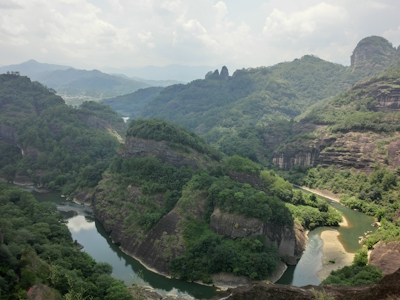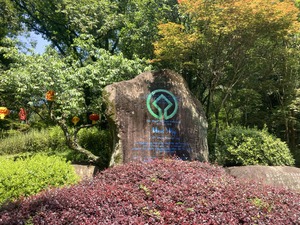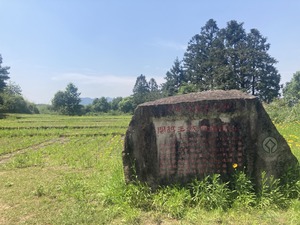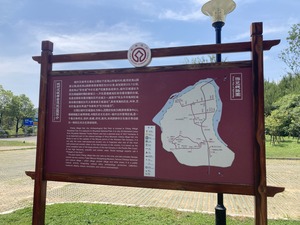Mount Wuyi

Mount Wuyi is a scenic landscape of forests and deep gorges, which became the cradle of Neo-Confucianism.
The area contains several archaeological sites, including a Han City established in the 1st century BCE, and a number of temples and study centres associated with the birth of Neo-Confucianism in the 11th century CE. Its natural values include the beauty of the gorges of the Nine-Bend River, the monoliths of local red sandstone, its subtropical forests, and its reptile, amphibian and insect species diversity.
Community Perspective: Hiking and rafting are the main things to do here. Els explored the Han City component and recommends the Da Hong Pao Tea Trail.

Map of Mount Wuyi
Community Reviews
Trekkie900
The WHS boundary of Mount Wuyi includes the west most part of Jiangxi province and the northwest part of Fujian province. As a mixed site, Mount Wuyi is famous for both its natural beauty and historic value.
The natural part of Mount Wuyi, of course deserves its inscription as a natural heritage. The whole area is in Danxia landform (regions with cliffs and red stones formed with the force of water), similar to all the locations inscribed in another world natural heritage site "China Danxia". Inside the Mount Wuyi Scenic Area, there are three most famous peaks that are inscribed: Tianyou ("wandering in the heaven") Peak, Yu'nü ("jade lady", used to describe beautiful young female) Peak and Dawang ("the king") Peak. You could easily access all the three peaks by the shuttle bus (70 RMB per person per day), and hike both Tianyou Peak and Dawang Peak. Yu'nü Peak, however, is almost impossible to hike but is the most iconic site inside the national park. It is said that the peak obtained its name because of the similarity of its shape with young female, however I could not identify any resemblance. Besides the mountains, the Jiuqu Stream is also inscribed into the natural part. One could easily take a bamboo raft to raft along the stream (a total time of about 1 hour and 20 minutes). During the raft, you could see all three peaks, as well as the Boat Coffins hanging on the cliffs and the Cliff Rock with inscriptions.
The site was inscribed as a cultural site, however, more likely due to good story-telling. Mount Wuyi is a place for the birth of Lixue, a branch of Chinese philosophy first established by Zhu Xi, a famous philosopher in the Song Dynasty of China. The remaining sites of Zhu Xi Lixue, as well as those buddhist temples and taoist temples, are mostly built in recent years so they actually lack any historic values regarding the architecture themselves. For example, Zhizhi An Temple near the Dawang Peak and the Shuiguang ("the shimmering water") Rock (a rock full of historic inscriptions), is actually destroyed in 1950s and was rebuilt during 2003-2006.
There is also ambiguity in the inscribed historic sites of this WHS. It has been said by many sources that the temples inside Mount Wuyi Scenic Area, the ancient bridge in the north of Wuyishan City (Yuqing Bridge) and the kiln site in the west of Mount Wuyi Scenic Area are all inscribed sites. However, if we refer to the maps on the UNSECO website, we will find that only four sites are inscribed as the components of cultural heritage. They are: 1) Boat Coffins hanging on cliffs and Hongqiao boards (inside Mount Wuyi Scenic Area); 2)Cliff Rock with inscription (inside the Mount Wuyi Scenic Area); 3) Ruins of Han Dynasty City (or named "Chengcun Hancheng Site", inside the Chengcun village in the south of Wuyishan city): 4) Ancient dwellings at Chengcun (inside the Chengcun village). I visited the cliff rock and the ruins of Han dynasty city. I have to say, the cliff rocks are everywhere in China, you could find similar sites in Mount Taishan, Mount Huangshan, Mount Huashan, Mount Hengshan, and many more mountains in the central and east part of China. I don't see any particular historic values of these Cliff Rocks. As for the Han Dynasty city ruins, although they claim to be "Pompeii in the east", they are actually very small in scales and are not comparable to many ancient city ruins in north and central China. If you want to visit some more valuable historic ruins in the similar dynasty or even earlier, you could easily find one in Henan, Hebei and Shandong province. For example, the Handan Gucheng of Zhao (the ruins of state Zhao in Handan, Hebei, during the Western Zhou dynasty, about 2500 years ago) and Luguo Gucheng (the ruins of state Lu in Qufu, Shandong, near the WHS of Confucius temple) are much better than this ruin.
In short, this site is good for both natural and cultural values, but its cultural and historic part is not as even comparable to most WHS in China. The transportation, however, is quite easy, as the Mount Wuyi is just on the other side of the river crossing Wuyishan city downtown.
Els Slots

The WHS of Mount Wuyi has not been covered well by reviews yet - at least I think they do not do justice to the complexity of this mixed WHS. After reading beforehand about what to see and do in the area I decided to spend more than one day here and explore various parts.
On my arrival day, I moved straight to the second location called “Ruin of Han Dynasty City”. This lies some 15km outside of the Wuyi scenic area. From Nanpingshi railway station (formerly known as Wuyishan East) I took the recently installed tramway and got off at Chengcun, from where it’s a 3km walk to the ruins (it’s signposted and you can use the bike path). It’s a location of interest in the inscription history of this WHS, as ICOMOS in 1999 actually considered it a separate site and thought it would be better to split this cultural archeological site from the more nature-focused main site.
The split didn’t happen though and now the Han City Ruins are part of the Wuyi WHS, and they proudly display the WH logo everywhere. Strangely, access regulations are different between the two locations – while the main site requires quite costly one or multiple-day passes, the entrance here is free. The ruins lie in a sleepy village and at the sites (I went to the museum and the palace ruins) no one else was around except for one person at each reception. The museum is quite a grand building and was modelled after Beijing’s Imperial Palace. The Han City dates from the 1st century BC and testifies to the time when the region became incorporated into the Han state and the local ruler became a vassal to the Han Emperor. These city ruins are considered unique for China as later constructions have never overlaid them. What remains though are hardly more than the foundations of what once was a walled city. Photo 1 shows the ‘Bath Pool’.
The next morning I was up early and managed to be among the first to enter Wuyishan NP. The park opens already at 6.30 in the main season. For some reason, I only had to pay for the shuttle buses (70 Yuan (9 EUR), which even became 65 after an inexplicable Alipay discount) and not for the entrance (which is listed as 140 Yuan for 1 day). I had read online that they had given free entrance until April, but maybe they continue this practice.
I had chosen to visit the Da Hong Pao area first – it turned out that I was the only one wanting to go there at this early hour and I sat alone at the bus. That was fine by me as it resulted in a very pleasant and quiet hike. This area in the northern part of the park is known for its growing of tea plants. The so-called Tea Trail, 4.5km long, connects Da Hong Pao with the Water Curtain Cave via a narrow path through valleys and up and down stone stairs. The area was used as an Imperial Tea Farm and still produces a specific red kind of tea. A key spot is its remaining set of 6 original tea trees that are over 300 years old.
Along the way, you will also pass a fine 18th-century temple and ancient cliff dwellings high up against the cliff wall. As it was so quiet, I saw several birds such as a red-headed trogon and the very pretty Silver Pheasant (which is mostly white). The trail ends at the Water Curtain Cave, which is a steep waterfall that in this dry season only trickles from the top. Maybe it's not really worth the steep climb to get there, but there’s a Neo-Confucian shrine (infested with bees) at the bottom end of the wall so you can ‘tick’ the Neo-Confucian part of the OUV as well!
After 2 hours of hiking, I took a shuttle bus back to the main area near the park's South Entrance. Here I did another short walk: to Zhi Zhi An nunnery. This easy path starts at Wuyi Palace and follows the bending river. There’s a good viewpoint from where you can take pictures of the bamboo rafts floating downstream against the backdrop of the cliff walls.
Andrew Wembridge

I visited Wuyi Shan in Feb. 2017 on a weekend I had spare, being in Fujian Province on business at the time and this being one of the reachable UNESCO sites from where I was based.
The two main activities are floating along the river on a raft (accompanied by what I assume was some sort of running commentary, tea and music) as well as rambling across the mountainous terrain which features many tea plantations - some of which were purportedly slated for imperial use due to their specific geographic location and thus I assume climate / sun / shade / soil / overall quality.
There is also a temple and a cave which you will come across, with all the major sights being serviced by regular shuttle-buses. A one-day tour ticket was Y150 at the time.
I'm not sure I'd go out of my way to travel here if I weren't already nearby for other reasons, but it did give me a chance to stretch my legs and get some fresh air away from industrial cities and I did want to share a few photos given that there have yet to be any published.
AW
05 Mar. 2018
Zoë Sheng
Chinese-Canadian - 01-Feb-16 -
Mt Wuyi is one of the best places to visit if you want to get away from the busy similar places such as Mount Longhu where you get to see the same rock-graves and formations, a trip down the lake on a raft and it comes with an "Impressions Wuyishan" as you might have seen in Lijiang, West Lake or Haikou. Worth a visit for the evening as there is not much else to do after dark aside from eating. There are not many foreign tourists here but busloads of Chinese tourists which means they amass at the bus stations but won't venture too far into the walking area.
Let's get started with the mountain. There are 2 areas to visit and the main spots are connected with a free shuttle bus if you bought the entrance ticket which is valid for several entrance gates so you don't have to visit all in one day. You are recommended to take one day for the northern part alone as there is a lot to see and gently hike, and then finish off with the raft trip. The next day should go to the southern area. Doing all in one day is possible but a bit tight especially as you need to time the rafting when you buy the ticket. There are not many steps up and down and the term mountain is misleading in this case. There are many rocks around you and once in a while you will have a small ascend but unless you are really out of shape it is easy. Start by taking the bus to the very north and walk south from there seeing many things on the way. You will see a tea plantation (Wuyishan Tea is famous in case you don't know). At the road you will find a temple that is less interesting but the day is over soon if you walked along. There are a few narrow spaces in the northern area where you have to take off your backpack to get through.
Southern area is more for observing than hiking. You have the typical "thread in the sky" they call what are two massive rocks close together where you can just see the light in a tiny line at the ceiling. I don't recommend this but go ahead if you must or if it empty. If there are people queuing it could take a long time to get through and the space is extremely narrow! Even "normal" people might get a bit nervous if the line does not move along. Some areas of this part are fenced off because they are too dangerous to walk nowadays. You can venture quite far south and you won't see many tourists because they all stay near the thread part which I have to admit are the best places to see in this area.
The raft trip is very nice and you see the graves in the rocks and many formations that are marked on your map. The only downside is that the local rafters ALWAYS try to squeeze money out of the group. Basically they claim they don't make much money on this job and if each passenger forks out 10 yuan they will sing a song and tell you about area, point out rocks. It's not so bad but his kind of forced guide is useless if you don't understand English plus if the rest of the group wants to pay but you refuse they make you look like the bad guy. They do this at every location in this area like Longhu and it gets very boring. If you don't want to pay just say you have been here before.
Spend the evening going to the Impressions show - the only cultural show in town. You don't need to understand anything to enjoy this. The colors, music, images and dancing alone is very impressive - the best Impressions show I have seen (and I've seen most).
Dinner is best done at a fast food restaurant - I kid you not. The local food is extremely greasy and extremely overpriced. You will need to detox after the meal so after the first night I chose Decos (KFC ripoff) - for someone who usually avoids all fastfood this was heaven. The hotels are all in the "new" town near the mountain. My hotel was across the bridge in the mountain area which means you could walk there but the bus is still a better option. If you stay in the new town you can take a shuttle bus to the bridge and then exchange the other bus. If you want to go to the airport you can take the bus as well. Taxis will tell you there is no bus but the new town is basically just a long road and as they don't use meters you will get ripped off - generally don't go for taxis if you can speak/read some Chinese and try to find out alternatives. Even taking a taxi from the main road is better than the airport/station itself. The rail station is in the old town which is dirty and has nothing but a market on a wooden bridge which is interesting to walk through if you are going to the rail station at night anyway. You can also choose to eat here for cheaper but I suppose it's also not very good.
The new town has 4 things: hotels, overpriced restaurants, carvings (big ones, not souvenirs) and tea shops. The latter is more interesting for us tourists. You can get a small pack for 10 RMB but obviously the quality is crappy. The green tea is really not for everyone and a bad blend is even worse. Either buy something for 50-60 or just forget about it.
Finally, when you get to the plantations in the northern area you can eat tea eggs and a bowl of tea. Actually affordable and delicious snack.
Community Rating
- : Nongbulinqing Stanislaw Warwas Ssong.x
- : David Gang XU Ming_9734 Hanming Luke LOU
- : Zoë Sheng Baiqitun Bin Csaba Nováczky Kbtwhs Lichia Xiquinho Silva Yang Chengyu Dwight Zehuan Xiao
- : Gcjdavid Els Slots ChenMing George Evangelou YAO WEI Chenboada Alex Marcean Trekkie900 Kasper
- : Alexander Lehmann KoenigMarke Christravelblog Jeffrey Chai Ran Ludvan
- : Andrew Wembridge
Site Info
- Full Name
- Mount Wuyi
- Unesco ID
- 911
- Country
- China
- Inscribed
- 1999
- Type
- Mixed
- Criteria
-
3 6 7 10
- Categories
- Natural landscape - Forest Religious structure - Indigenous
- Link
- By ID
Site History
1999 Inscribed
Site Links
Unesco Website
Official Website
Related
In the News
Connections
The site has 29 connections
Constructions
Ecology
History
Human Activity
Religion and Belief
Science and Technology
Timeline
Trivia
WHS Hotspots
WHS Names
WHS on Other Lists
World Heritage Process
Visitors
81 Community Members have visited.
The Plaque
 (photo by Els)
(photo by Els) (photo by Els)
(photo by Els) (photo by Els)
(photo by Els)